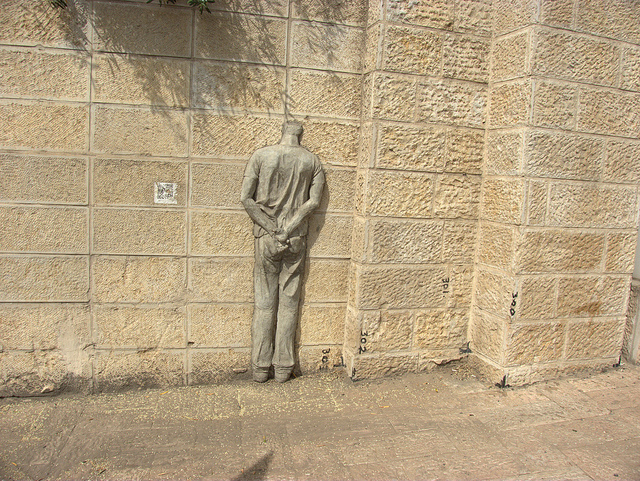Prisons are holistic and extended social systems, a point that remains too little recognized in public discussions of prisons and imprisonment. That system includes prison staff and their families, people equally capable of social expression as prisoners and their own families. While prisoners often write of their experiences, prison wardens and guards are far more reticent.
The literature of prison wardens and staff is a quite limited, small body. Its most notable works include the memoirs of famous prison wardens or the occasional guard account, such as Ted Conover’s participatory journalism book New Jack: Guarding Sing Sing (2000). The memoirs and published writings from the families of prison employees is surpassingly small, even though prisons have a formative effect on everyone associated with them. The only notable fiction dealing with this topic that comes to mind readily is Tara Ison’s A Child Out of Alcatraz (1997), a story of a prison guard’s family and its disintegration as told from the perspective of a young girl living on Alcatraz island.
Colleen Frakes’ Prison Island: A Graphic Memoir enters this barely-charted territory of families who live from imprisoning other people who in consequence most frequently experience the collapse of their own families. Whatever one’s political perspective on prisons, it needs acknowledgement that there is a form of social cannibalism here: prison guard families eat because the parents take salaries to imprison and punish others. That awareness creates a social, emotional, and security barrier between those who identify with guards and those who identify with prisoners and their families. So in reading Prison Island the question becomes not only how Frakes describes her own family, but whether she could reach out through graphic narrative to imagine other families? The brief answer is not well, but that gets ahead of matters.
Prisons in the United States tend to be located at geographic and social peripheries. Prison Island describes a girlhood spent for ten years on the McNeil Island state prison in the state of Washington. Built as a territorial prison in 1875, the institution passed from federal hands to state authority in 1985, then closed in 2011. Frakes’ parents, both prison guards, had been working at different prisons on the mainland and their family was separated for three years. By both getting jobs at McNeil Island they were able to bring together themselves and their two daughters. In terms of family reunion or separation, the prison represented for the Frakes family entirely the opposite of what it means for prisoners. Frakes pays no notice of this contradiction within her story.
Most of the narrative hangs on a reunion visit that Frakes pays to the island to attend the closing ceremonies and visit sights of her youth. Her parents remained to work on the island while she went off to college and to establish herself in the outside world. In nine well-organized chapters the book combines the story of her visit, her first since going to college, with memories of her initial arrival, learning the rules governing the island, natural sights of the Puget Sound, attending school on the mainland, needing a ferry trip to pick up a pizza order, and memories of pajama parties with girlfriends. There is much wandering about deserted empty government-owned buildings in the tiny community constructed with prison labor to house fifty or so resident staff. There are even a small bowling alley out of operation for years and a filled-in swimming pool. Frakes does well in using black-ink drawings to convey the desertion and approaching extinction of a state-run village.
The book’s great gaping lacuna is the entire purpose of the island to secure prisoners. Prisoners are the present near-absence in the story. Frakes’ parents model this absence by excluding prisoners from conversation at home. As a girl she hears only occasional references to prisoners by her parents and they push the topic out of domestic consciousness.
When there is a prisoner work crew in the neighborhood the children must remain locked indoors. When a girlfriend exchanges words with a prisoner working on the ferry, Frakes cautions her that talking with a prisoner is a rules violation that could get them kicked off the island. In their brief exchange, one of the most revealing in the book, the young girl Frakes says “It’s not like just because someone is in prison that he’s a bad person” and adds that her uncle is in prison. She concludes “It’s like most of the adults I know are either in prison or work in a prison.” Yet it remains unclear how Frakes knows prisoners because, unlike her girlfriend, she does not talk with them. The front cover image captures this position as she sits on the ferry, a young girl looking at a handcuffed prisoner in orange with a guard alongside. She remains ever the spectator.
It is telling that in the entire book there is only one drawing of the prison itself, ironic given that there are two drawings of the Tacoma mall. Frakes represents the far-from-normal experience of youth spent on a prison island, yet as told this remains an experience that shares much in common with many other suburban teenagers. This dissociative problem arises because Frakes spends so little time challenging the terms of such a putative normality, one where she is among the very few on the island who walk free. The term ‘prison’ cannot be separated from ‘prison island’ but Frakes leaves readers on their own to imagine the prison and its prisoners. The question becomes why Frakes, a talented artist and storyteller, did not aim higher.
Photograph courtesy of Oh Berlin. Published under a Creative Commons license.





